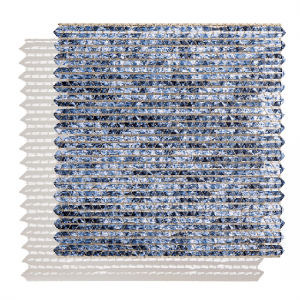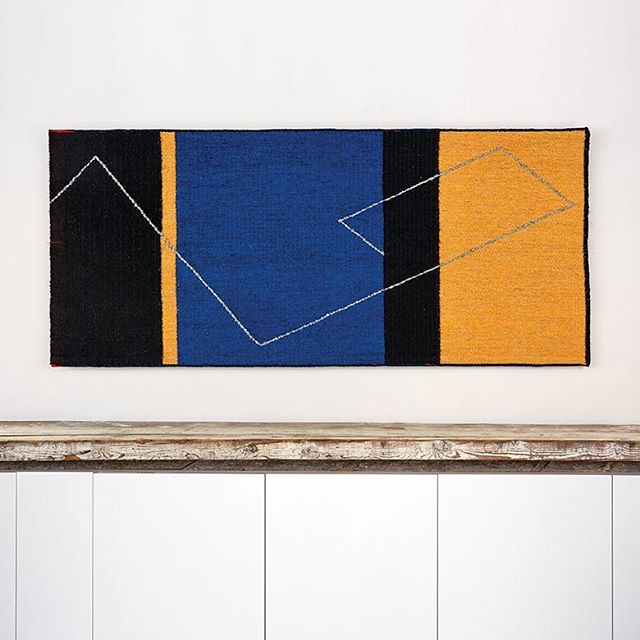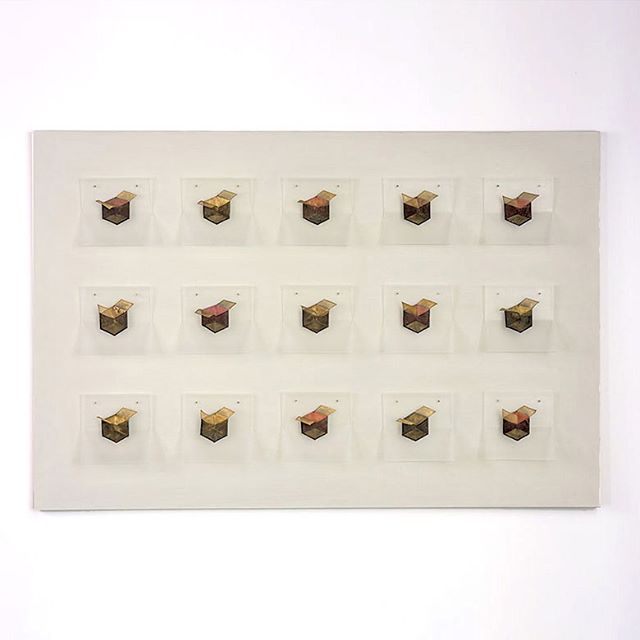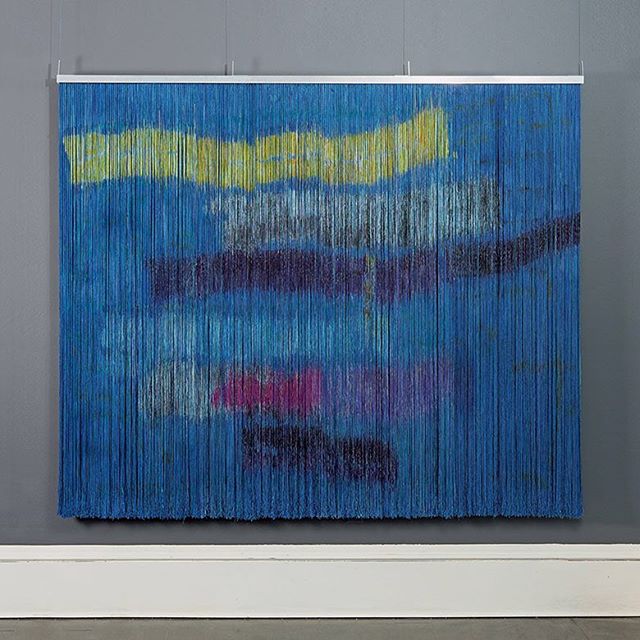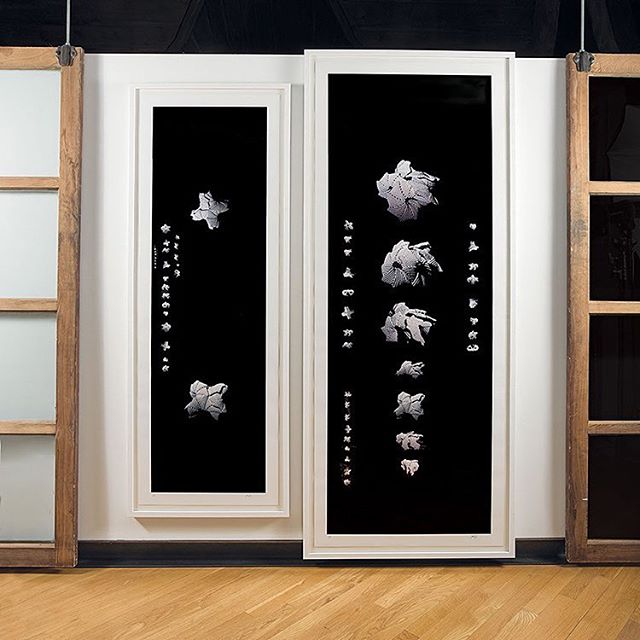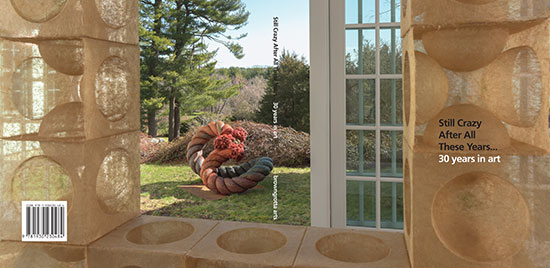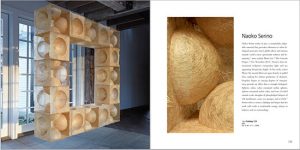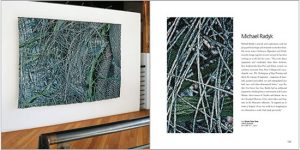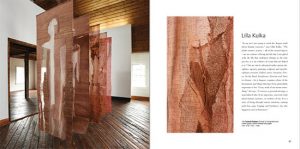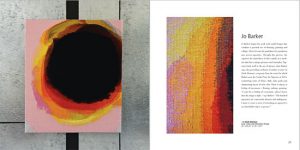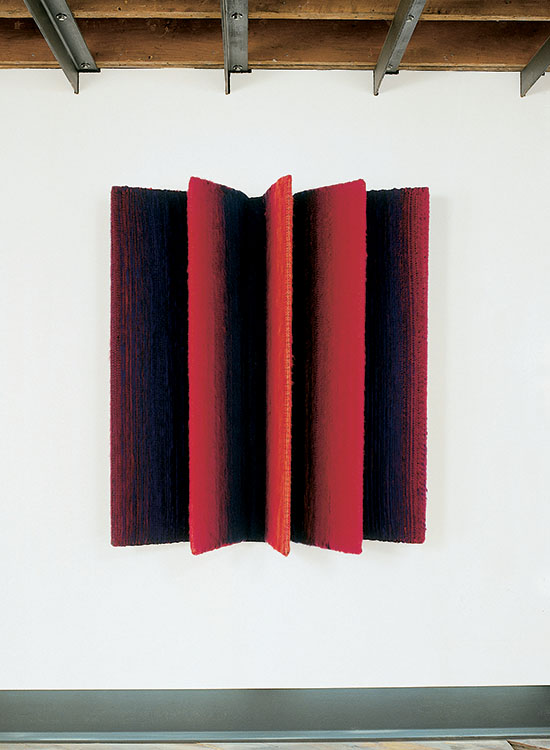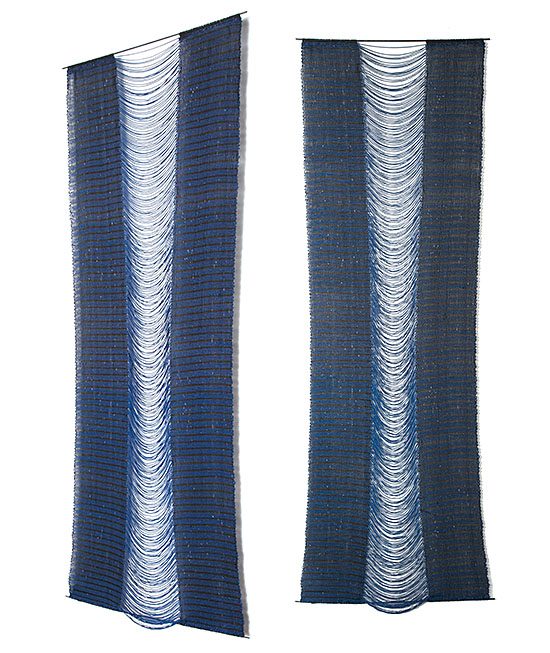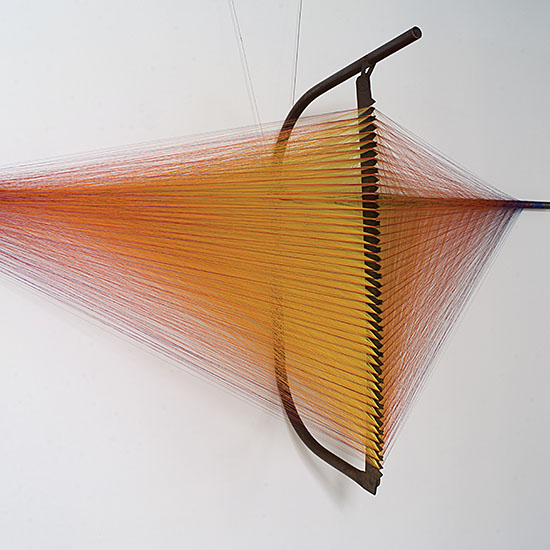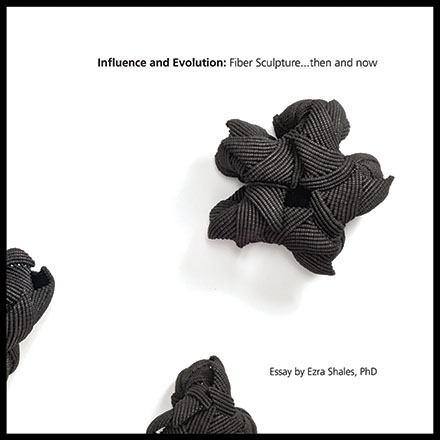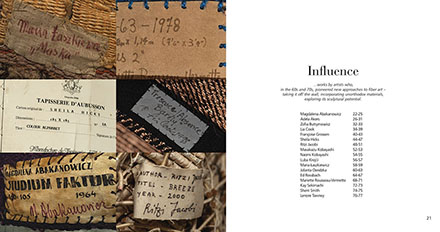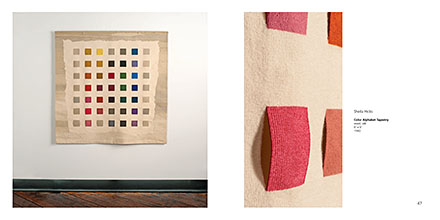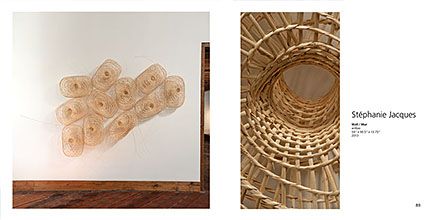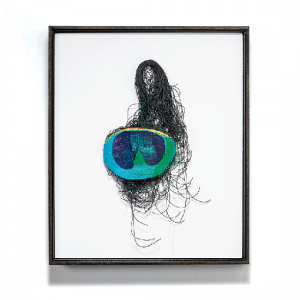
Stellae Pavonis, Federica Luzzi, waxed cotton cord, silk, cotton, rayon, polyester thread, copper wire, 25.25” x 21.25” x 3.25, 2018. Photo by Tom Grotta
July was quite the month for us here at browngrotta arts. Not only did we share some spectacular new pieces on our social media, but we also shared behind the scenes shots of our pick-up at Norma Minkowitz’s studio, photos of pieces that have been acquired by major museums as well as photos of a few of our favorite artist collaborations. Here is a breakdown of the new art we shared on our social media throughout July:
To kick off July we shared Federica Luzzi’s Stellae Pavonis. In Latin, Stellae Pavonis translates to “the stars of the peacock.” “In the eye of the peacock’s feather and in its tail, which shows and closes the cosmic unfolding and all the manifestations that also appear and disappear quickly, there is a space left free, without boundaries,” explains Luzzi. “This space is in the closed eyes when we dream and in the open eyes when our attention is active.” You can view Stellae Pavonis in space HERE.
Next up, we shared Keiji Nio’s Rough Sea of Sado. Rough Sea of Sado is an imagined haiku from Japanese haiku master Matsuo Basho. In his haiku Rough Sea of Sado, Basho “describes the deep blue waves of the of the Sea of Japan as they are reflected in the night sky and the light blue waves as they hit the beach.”
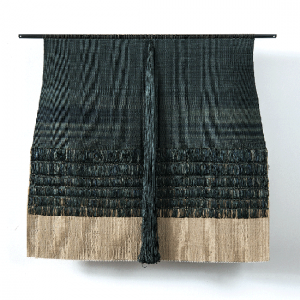
Amazonas, Carolina Yrarrázaval, yute, jute, raffia and silk, 35.5” x 39.25”, 2017. Photo by Tom Grotta
Carolina Yrarrázaval combines jute, raffia and silk to create Amazonas. The bold wall-hanging came about as a result of Yrarrázaval’s strong fascination with resilient people of the Amazon who live in harmony with nature. “Remarkable primitive communities, they are preservers of ancient traditions,” writes Yrarrázaval. “Their exuberant green, full of life, moves me to an infinite emotion.”
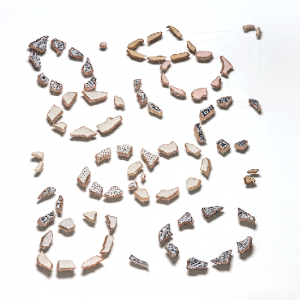
Dutch Blue (Oval), Marian Bijlenga, camelhair, fabric, stitched, 34” x 34”, 2006. Photo by Tom Grotta
In making Dutch Blue Marian Bijlenga drew inspiration from blue-and-white pottery (Delftware and Delft Pottery) made in and around Delft in the Netherlands. Delftware is part of the of the worldwide family of blue-and-white pottery, using variations of the plant-based decoration first developed in 14th-century Chinese porcelain. Marian Bijlenga’s Dutch Blue is inspired by the patterns of Chinese porcelain and the Japanese philosophy of the Kintsugi. Kintsugi, the Japanese art of repairing broken pottery, treats breakage and repair as part of the history of an object. To this day, Broken shards of pottery remain in the Dutch canals. See Dutch Blue in detail HERE.
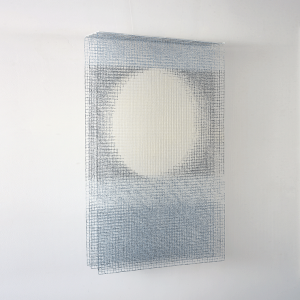
Doorway, Rebecca Medel, knotted linen and cotton 5 planes, 51.5” x 32.25” x 8”, 1996. Photo by Tom Grotta
We wrapped up July with Doorway by Rebecca Medel. “During the decades that I used knotted netted grids to create open planes, I constructed several pieces with the door as a structure to symbolize the transition and passageway from one place to another,” says Medel. “The open grid suggests a possibility that the door could be an entry or exit from one dimension to another dimension, and form finite space to infinite space.”

